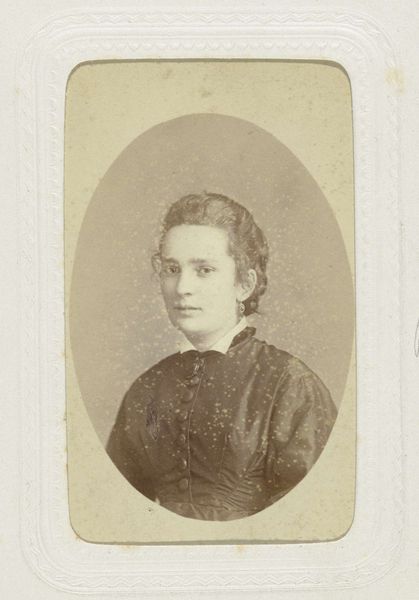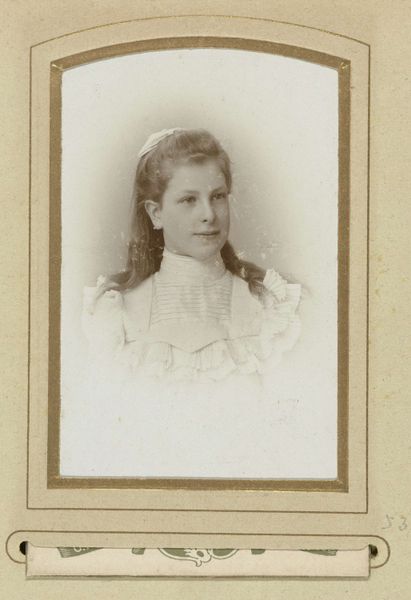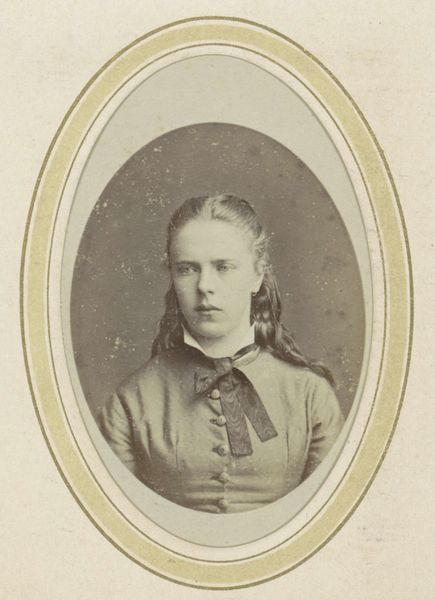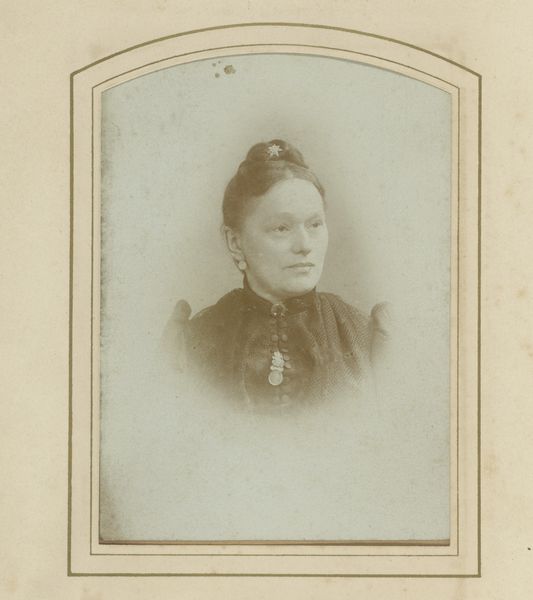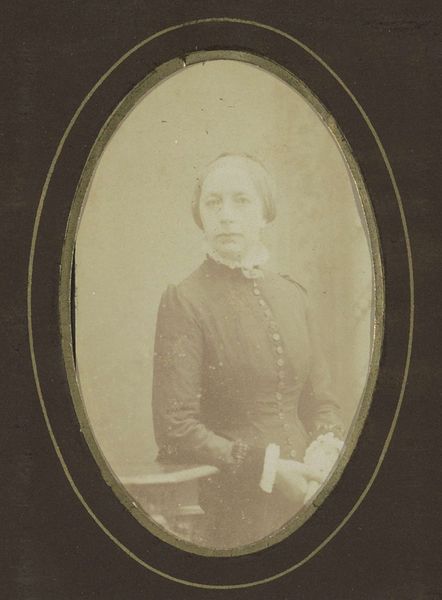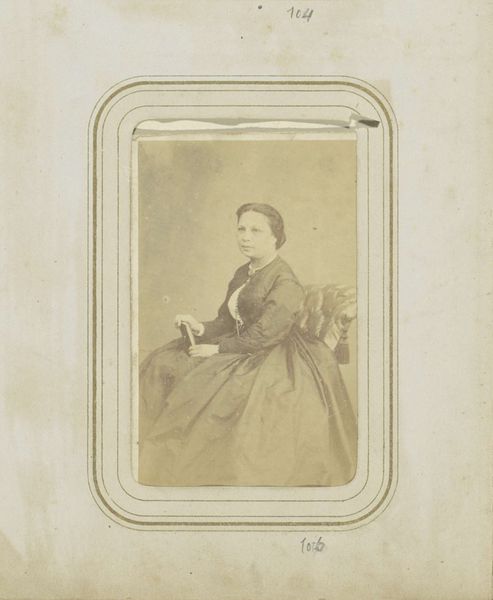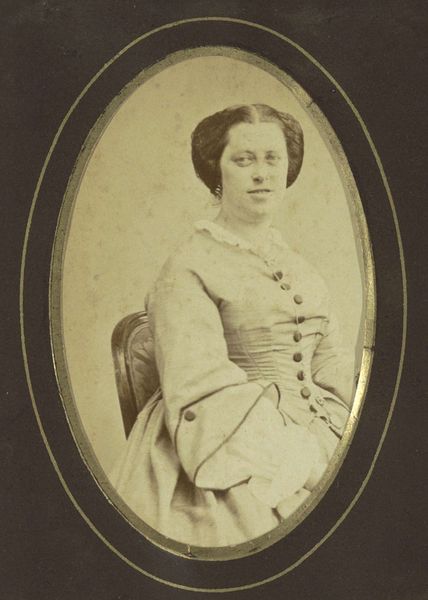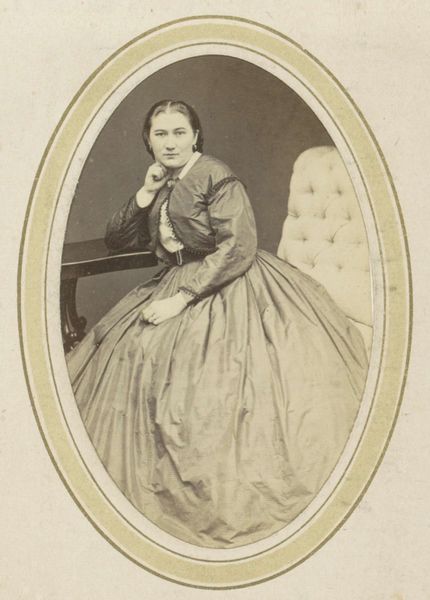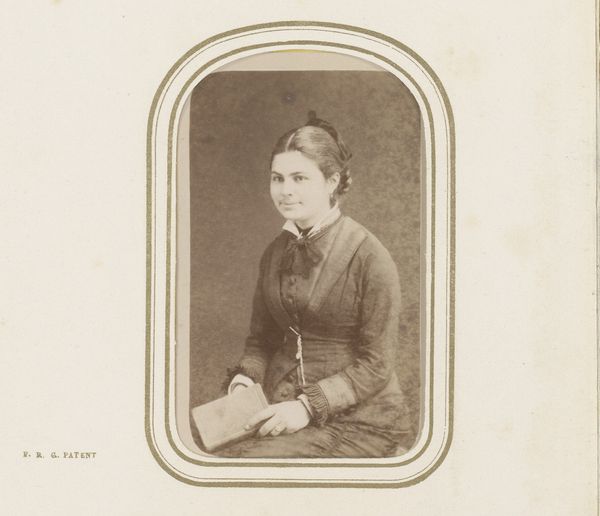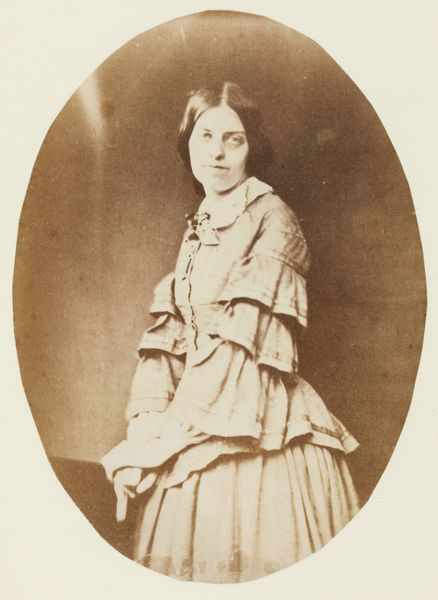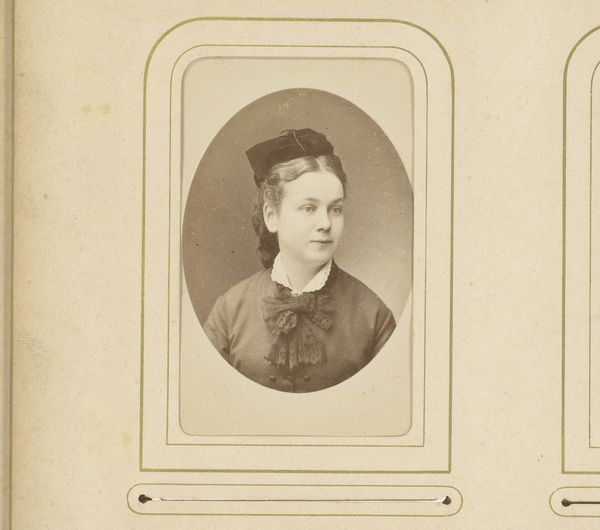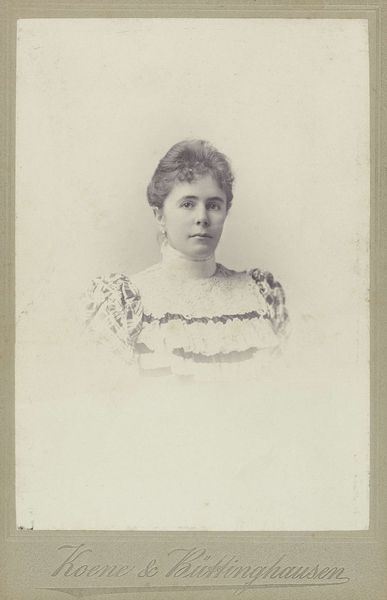
photography, gelatin-silver-print
#
portrait
#
16_19th-century
#
photography
#
pencil drawing
#
gelatin-silver-print
#
realism
Dimensions: height 103 mm, width 70 mm
Copyright: Rijks Museum: Open Domain
Curator: Before us hangs "Portret van een Meisje," or "Portrait of a Girl," created around 1855 by Eduard Isaac Asser. It’s a gelatin-silver print, currently held in the Rijksmuseum. Editor: There's a haunting stillness to her gaze. It's more than just the formality of portraiture; it’s like capturing a fleeting moment, rendered in shades of gray. The softness is striking; she looks almost ethereal. Curator: Considering Asser's legal background, it's intriguing he took to photography. The labor involved in early photography – the preparation of the plates, the meticulous process – reveals a deep commitment. And gelatin-silver prints were fairly novel then, demanding both technical skill and access to specialized materials. Editor: Notice the single tassel hanging from her hair – almost like an exclamation point, a dash of unexpected asymmetry in an otherwise very balanced composition. Tassels often symbolize status, or perhaps adornment for a specific occasion. I wonder what story this small detail tells? Curator: The subtle tonal gradations, achievable through the gelatin-silver process, elevated photography from a purely documentary medium to an art form. What were the economic realities enabling middle-class portraiture like this to flourish? It speaks volumes about a shifting social landscape, doesn't it? The sitter isn’t some wealthy noble, but someone ordinary seeking self-representation through a photographic image. Editor: Indeed. Her simple dress and the understated necklace she is wearing speak to the aesthetics of her era. The pose has symbolism too – seated posture as an iconographic element reflecting poise, restraint, or perhaps her own carefully constructed self-image, meant to transcend her reality at this moment. The chair she sits on and how she decided to have it photographed might give us information about this particular piece and also the taste of those years. Curator: So, we can understand that photographs had very restricted reach. And who took the portrait says a lot about access and the social conditions where this process can exist. The materials themselves speak to the larger Industrial Revolution enabling chemical production. Editor: Precisely! It shows how photographic objects can provide historical continuity and insight, inviting us to consider our enduring cultural preoccupation with preserving identity through images. Curator: I've appreciated delving into both the mechanics and implications intertwined in its production. Editor: It’s a reminder of how something seemingly simple, a young girl’s portrait, can be so deeply resonant with its time and ours.
Comments
No comments
Be the first to comment and join the conversation on the ultimate creative platform.
